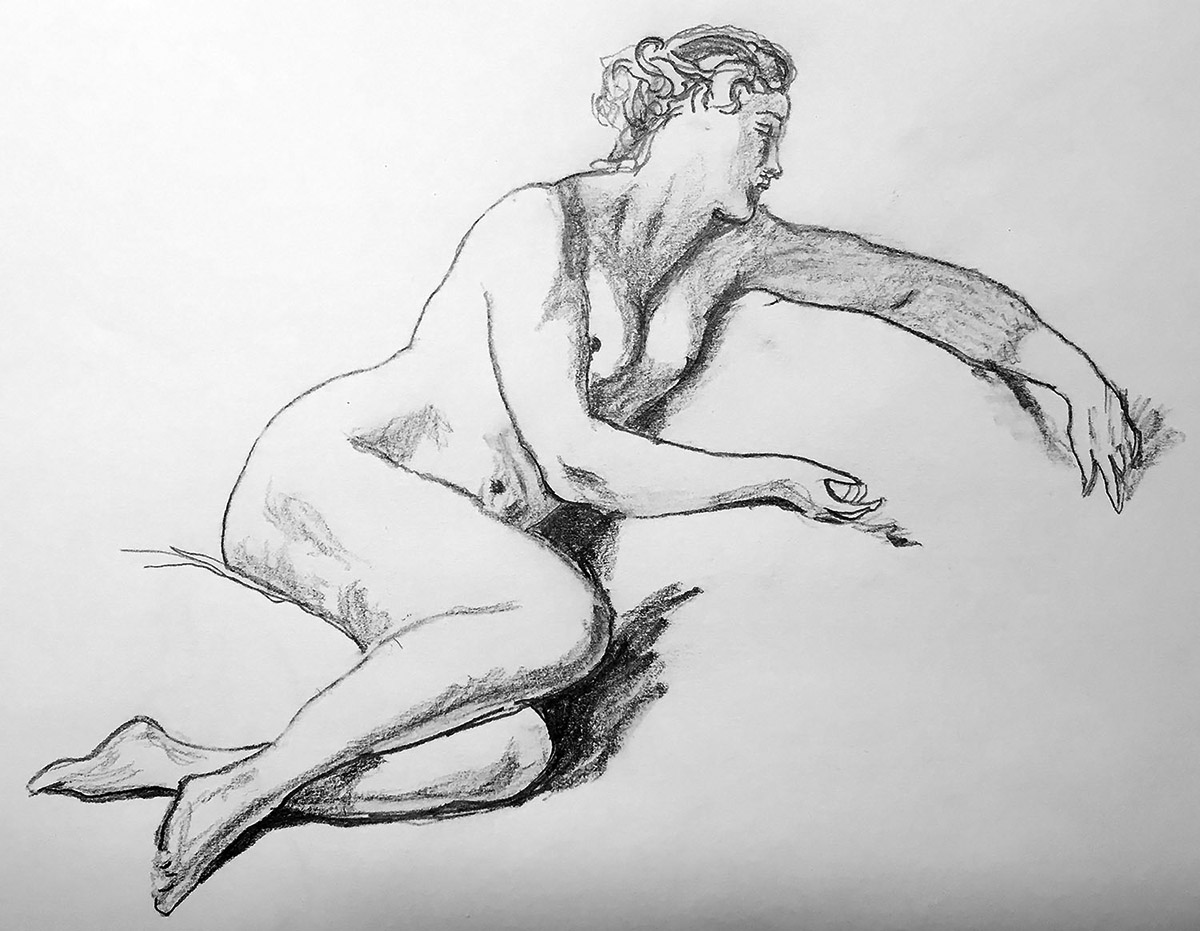
This next post is a drawing done in graphite pencil copied from a work by François Boucher. The original was done in chalk somewhere between 1750 and 1760. Boucher created this study of a female nude to use in a painting. No one knows if that painting was done or if it exists or anything. I’m sure someone had to know. I mean, right. There is a frivolous (that is the Riksmuseum’s choice of words, not mine, because it sounds a little snarky) print with this nude under the misleading title ‘Lady in Summer Clothes.’ The print shows her lounging on drapes on the edge of a pool with plants all around.
I don’t believe I have talked about François Boucher. Let’s paraphrase what Kimberly Cbrisman-Campbell and Andrew W. Mellon from the Huntington Museum in Southern California have said about Mr. Boucher.
François Boucher, spelled with one regular ‘c’ and another ‘c’ with some kind of goatee on it, has been called the definitive 18th-century artist, and he had an invaluable influence on taste during his lifetime. He also basically defined the lively and grand rococo style. Boucher is best remembered as a painter but his compositions can be found on porcelain vases, furniture, and tapestries. A person could almost furnish their entire house with Boucher’s artworks. Why would someone do this? I don’t know.
François Boucher was also a printmaker, theatrical designer, and book illustrator. He was extremely prolific and versatile, finding incredible success in various media. François Boucher did, however, reuse his own images and themes. I mean, he is only one man.
Critics sometimes criticized Boucher’s work as decadent, even silly, empty of narrative, moral value, or realism. Although extremely successful, Boucher lost his artistic preeminence toward the end of his life; overproduction, repetition, and the emergence of neoclassicism precipitated his decline from popularity with the public and the press. But his influence on his fellow artists cannot be overstated. Really, it cannot.
